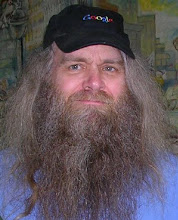or even impossible)
(you score extra points
if you manage things so subtly
that readers don't even notice)
using only 'DUM', 'dee'
and punctuation
(eg dee-DUM DUM-dee-dee, DUM DUM DUM-dee...)
convey the rhythms
of three negative emotional states
three positive states
and three mixed or neutral
(eg negative: criminal executing plan
positive: schoolkids on fieldtrip)
now find words to fit each rhythm
that describe a person or group
in that emotional state
so that the rhythms subtly reinforce
the description
now try using a positive rhythm
while describing a negative state
and vice versa
write a scene that alternates
villain's and victim's
points of view
with appropriate rhythms
translate passages
from your favorite authors
into this emotional morse
imagine assigning a color to every word
based on its emotional connotations
(eg 'viper' a poisonous yellowgreen)
and picture the pages of every book
with each word replaced
by a patch of its own color
some authors strive for colorless prose
others for color extremes
some are scrupulous about
subtle color patterns
others unconsciously coarse
or chaotic
try to suggest an emotion
without using obviously-colored words
or even using oppositely-colored words
(cf Lynch's 'Blue Velvet'
drawing menace from Anytown USA
or the opposite
an innocent scene
built despite menacing wordchoices)
experimentally add
appropriate and contrasting rhythms
real places have histories that offer
depth of context
which authors may or may not
exploit
describe a real or imaginary
town or neighborhood
so that the features mentioned
allude
in sequence
to its broad history
(eg 'Farmers regularly plow up
arrowheads...' for the
precolumbian era)
choose a sequence of living citizens
with one biographical detail each
so that the recent history of the town
is recapitulated
(eg 'Wilbur lost his wife
in the flood of '27')
explain a complex situation
from scratch
by introducing the characters
one by one
and giving a new
piece of the chronology
with each
(lecarre's 'mission song' is exemplary)
set a scene entirely in terms of
the ultimate fates of its
persons/places/things
(eg 'this car will have 3 more owners
in the next 12 years
before being recycled')
make a list of good points
and bad points
that are currently stirring debate
in the town
give a god's-eye view
at some particular instant
of some particular day
so that each of these
good or bad points
is subtly illustrated
in the doings
of a scattered set
of citizens
(eg 'Bobby has snuck into
the toxic waste dump
at the edge of town...')
